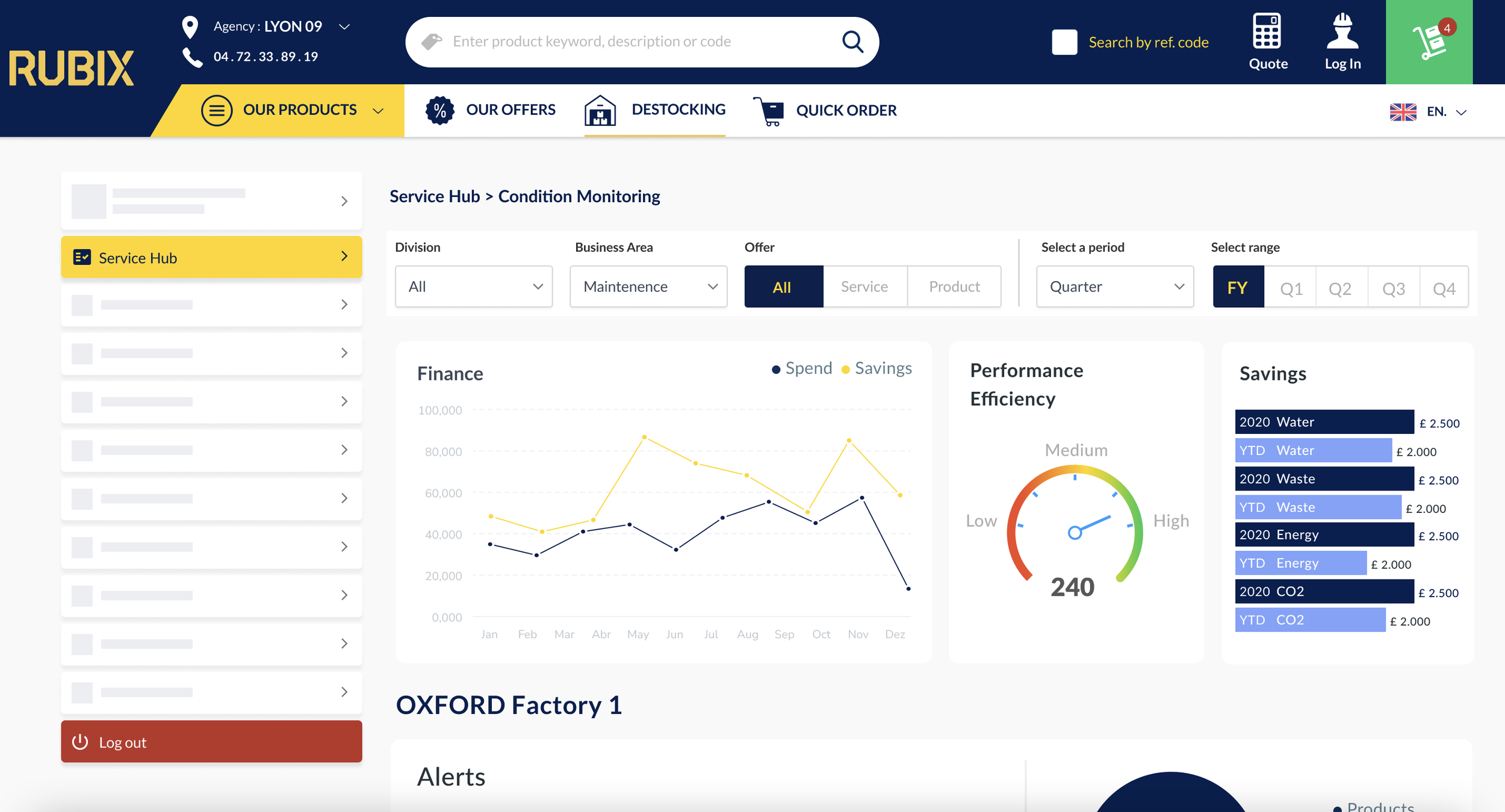
Simplifying a complex digital roadmap.
Rubix developed a roadmap that would innovate the business and solidify their position as market leader within the industrial component distribution.
Rubix has been undergoing a long and complex digital transformation process that was the outcome of a number of acquisitions undertaken by a private equity firm. The Rubix customer facing digital experience had long focused on the implementation of more basic and necessary features for it’s customers, such as e-commerce. Rubix had a desire to expand their digital roadmap by digitising some of their more complex service based solutions, that would generate long-term value for the business.
Approach.
I worked directly with the digital board members to define a programme that would see me assess the current business position, and make some initial recommendations as to how the business could innovation and advance their digital roadmap. These initial recommendations were follow by an exercise to simplify the existing digital roadmap and create a broader strategy that encompassed a set of digital innovations that aimed to digitise and expose the Rubix services offer that is seen as a value add to their core product driven business.
In order to assess the current digital position and to garner opinion on ‘what next?’ I undertook a series of qualitative depth interviews with internal Rubix employees based in the French and the UK markets. These were followed by depth interviews with Rubix customers. The aim of the research was to assess the current pains in the business, in relation to the digital offer and to better understand what expectations customers had. What we're their competitors doing and what had customers come to expect in a B2B commerce environment. I also ran a series of value proposition workshops with members of the digital team across multiple European regions.
To further garner the opinion of the customer, depth research was undertaken on the annual CSAT survey to analyse a more quantitative opinion on the customer. All of this information was used to create a vision, objective and set of opportunities that would digitise and monetise the Rubix service offer. Each of the core ideas was prioritised using an impact / effort matrix and was assessed for revenue vs. investment. This resulted in a series of OKR’s for the business built around the new service based deliverables. All of this work was then wrapped up into a new and more easily understandable roadmap that was two-tiered to work for both execs / investor, and product owners who were responsible for the delivery. All work was handed over to the Rubix internal digital team for implementation in the middle of 2021.
Outcome.
The work was presented to the core board and programme team members. The work was taken forward by the internal team for implementation in the middle of 2021. The first deliverable was a digital service finder that connects ‘real’ customer challenges with value added services that they would have been previously unaware that Rubix offered.
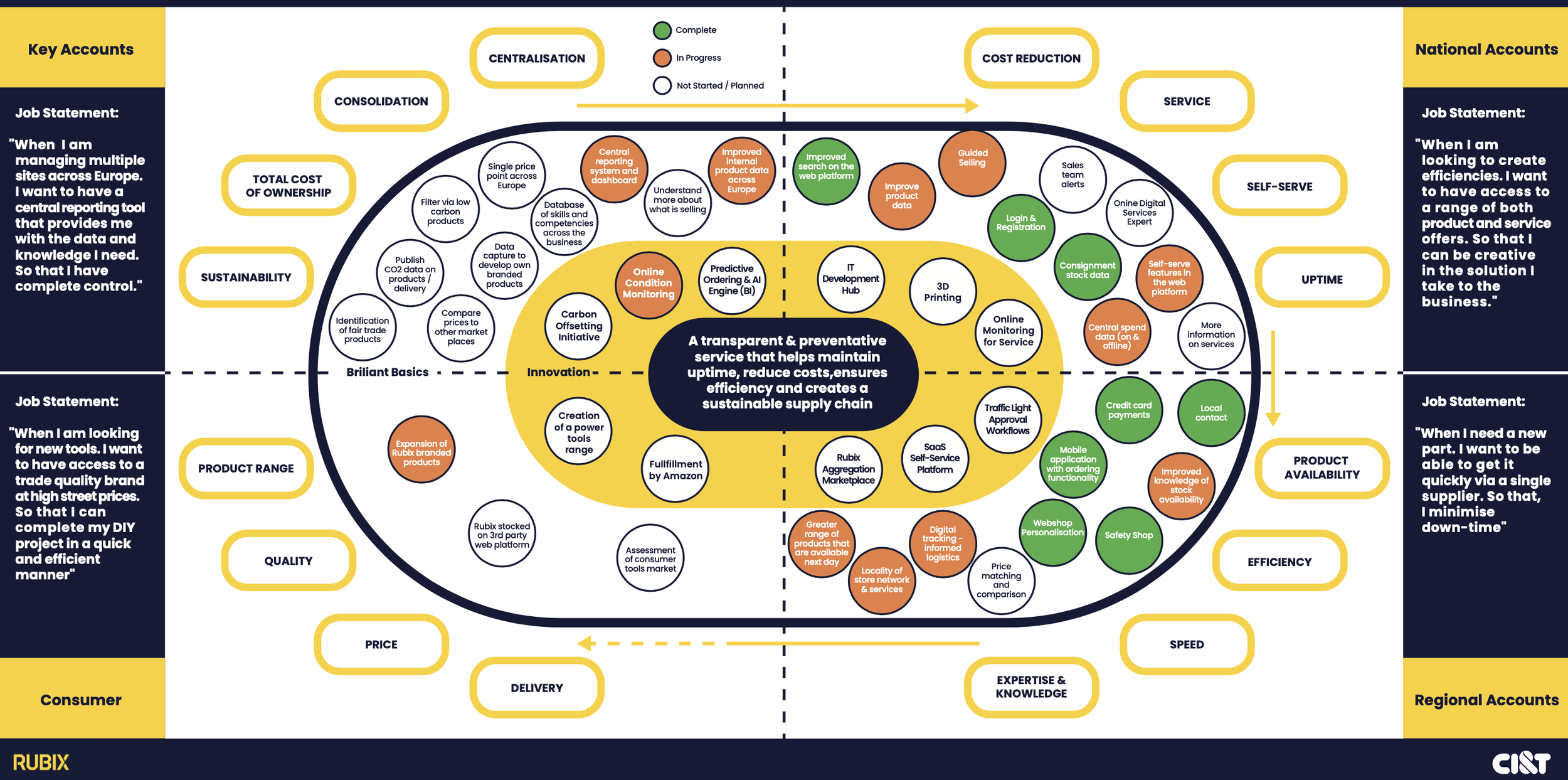
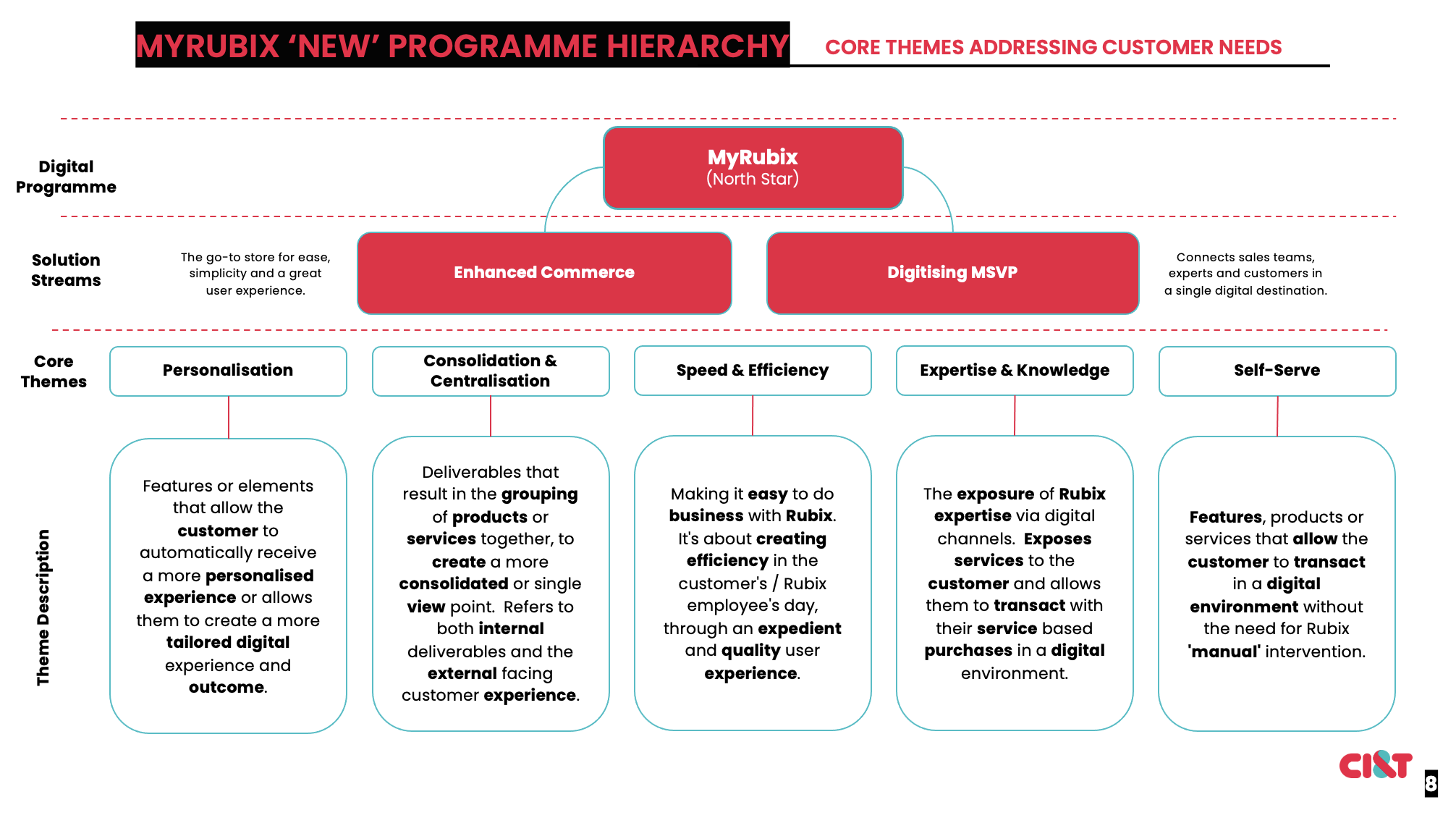
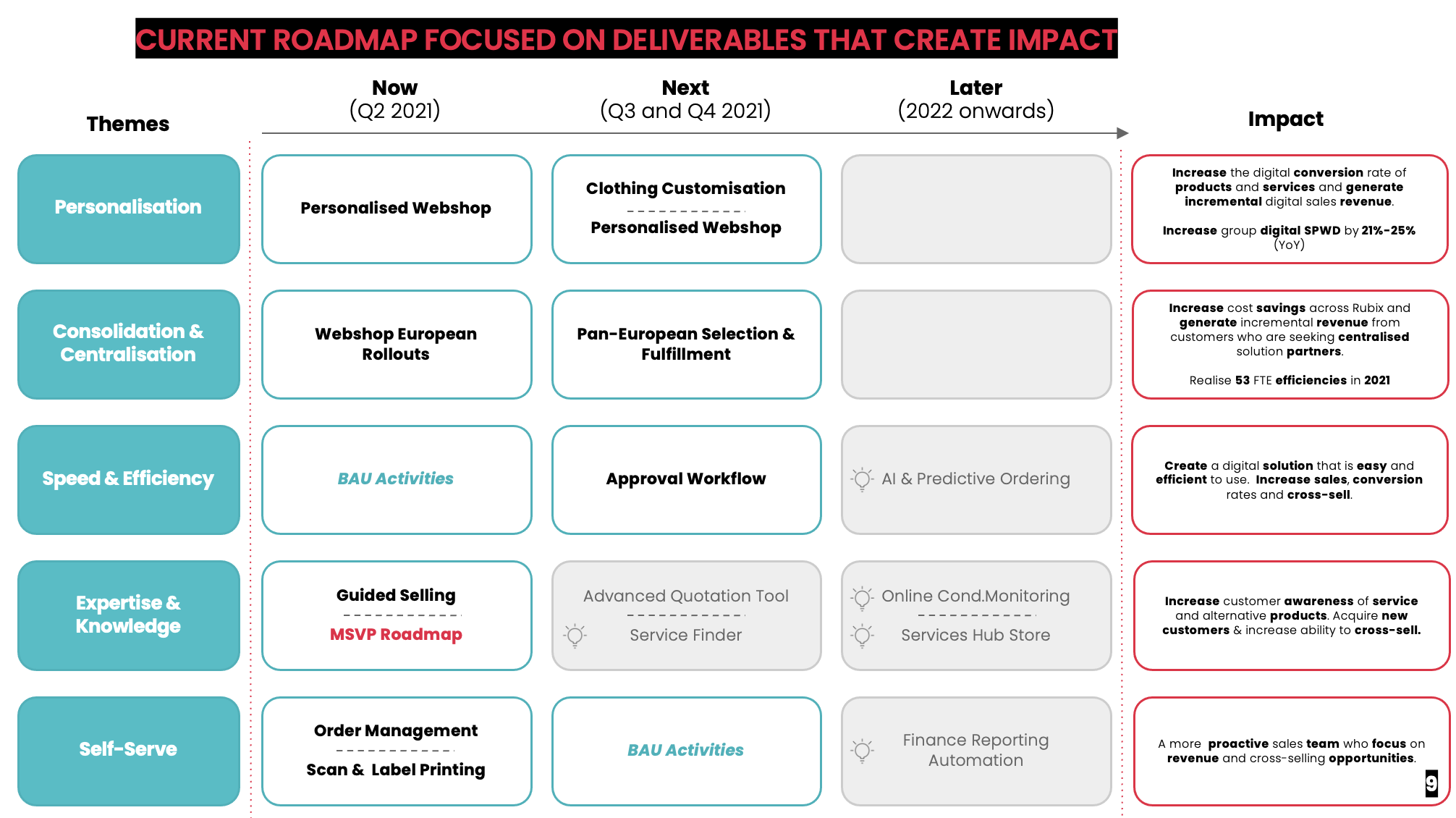
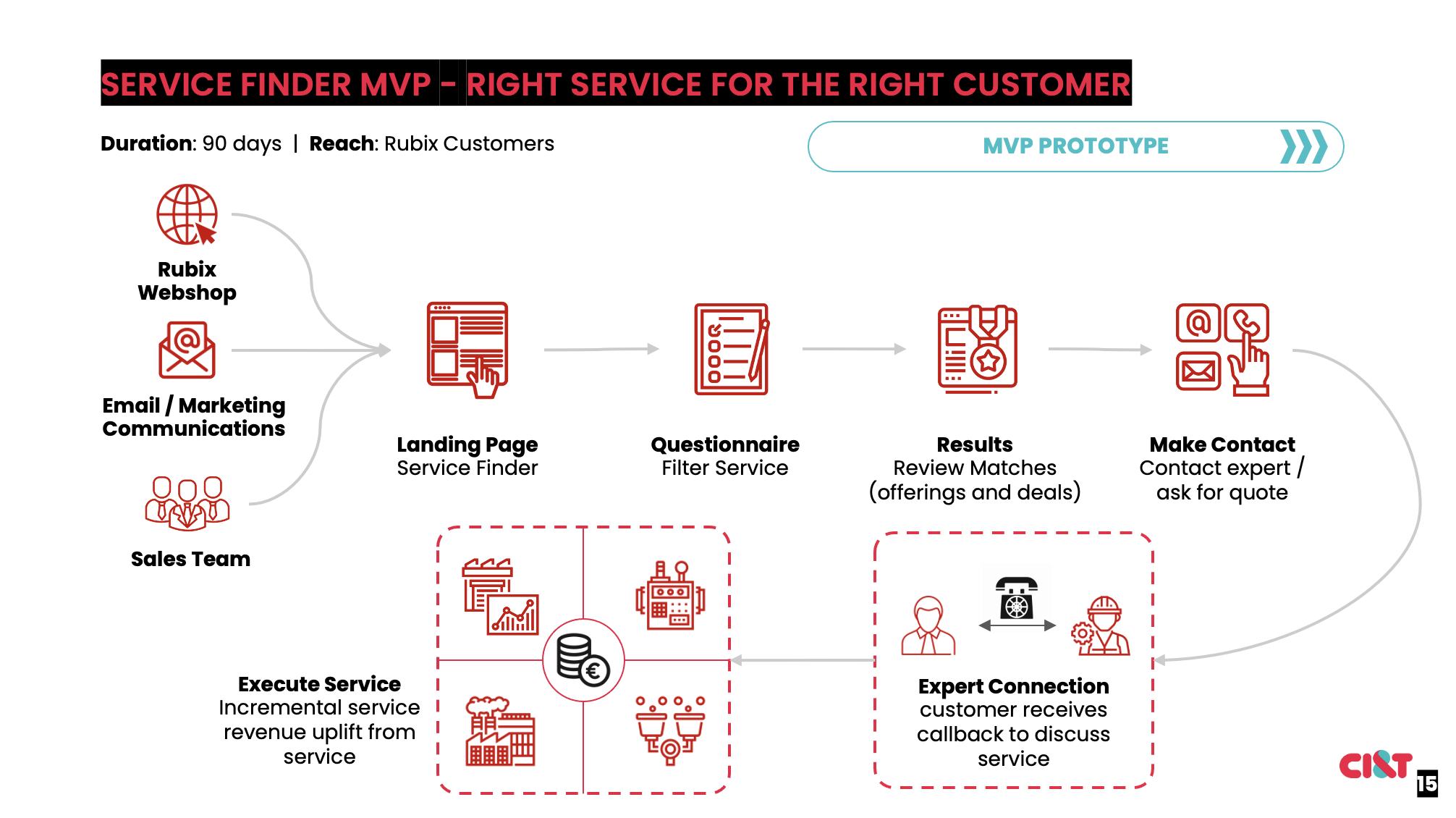
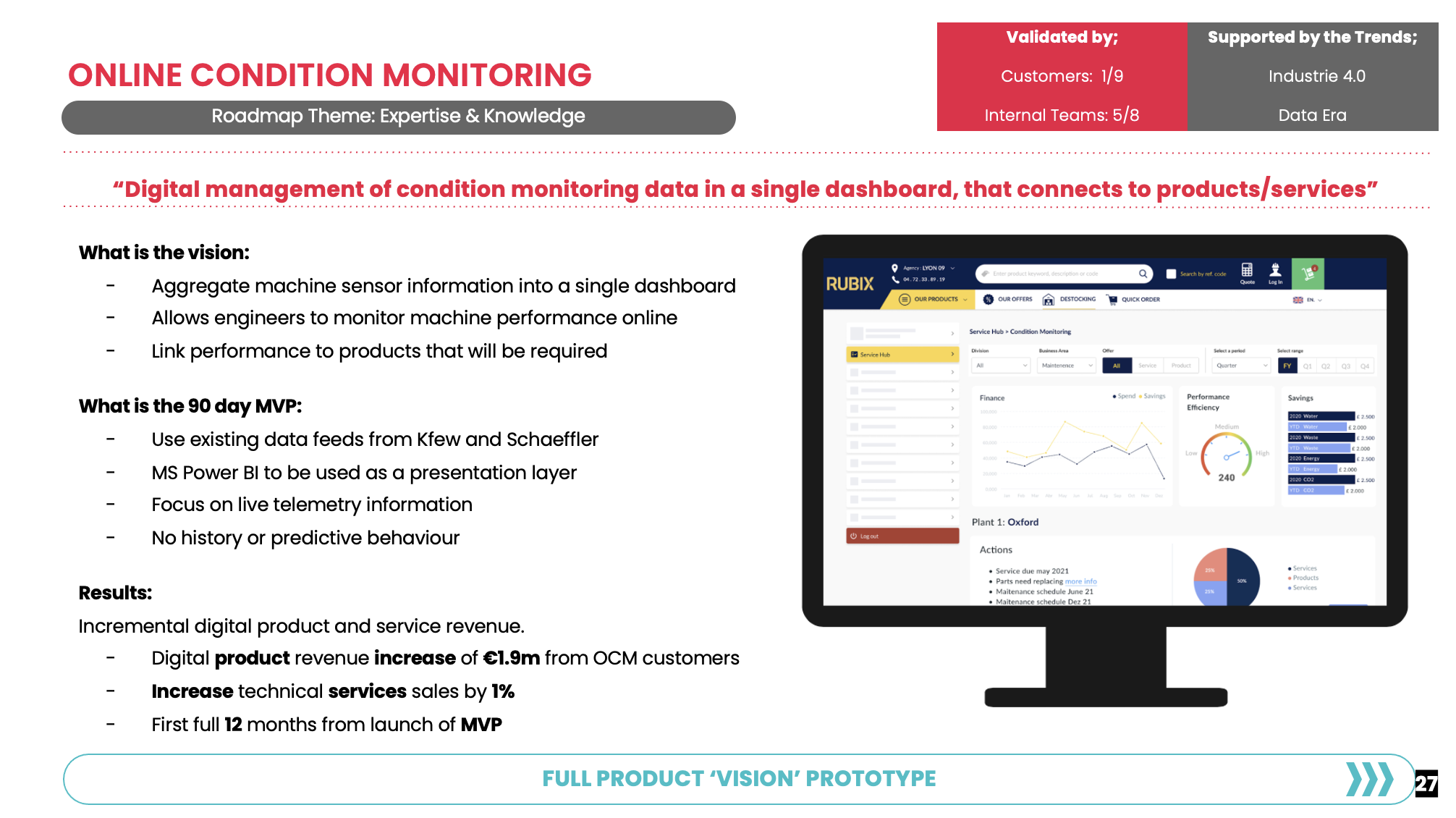
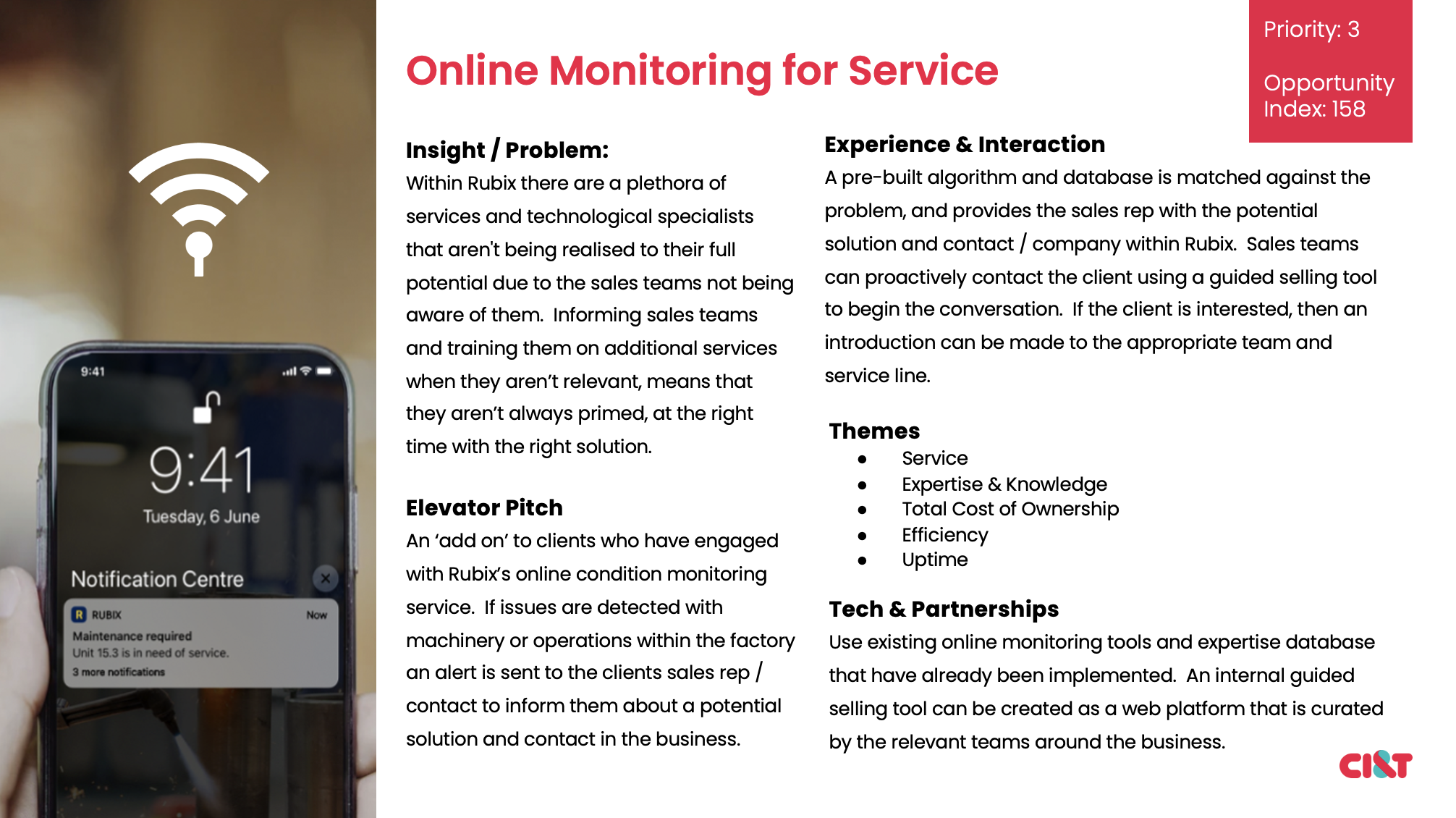
Methods & Tools.
The information below details a selection of the methodologies, techniques and tools used to deliver the project.
Methods
Qualitative research
Desk research
Qualitative analysis
Value proposition canvas workshop
Design sprints for idea generation
Roadmap creation
Prototyping
Competitor assessment
Impact / effort matrix assessment
OKR development
Vision / objective creation
ROI assessment
Tools
Google docs / Slides
Statista
Gartner
Value proposiiton canvas
Impact / effort matrix
TAM / SAM
Mural
Figma



